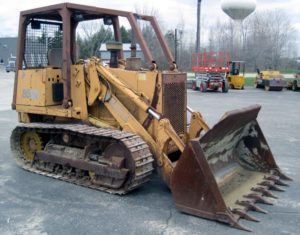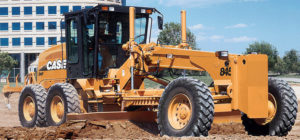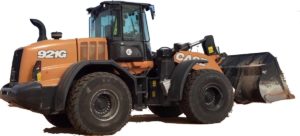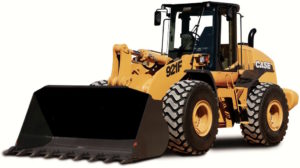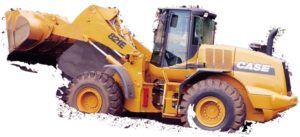INSTANT DOWNLOAD (add to cart)
1,422 total pages, bookmarked, Searchable, Printable, high quality PDF
MAKE: Case
MODEL: 850D, 855D Crawler
FORMAT: PDF (1,422 pages)
Complete digital official shop manual contains service, maintenance, and troubleshooting information for the Case 850D, 855D Crawler. Diagnostic and repair procedures are covered in great detail to repair, maintain, rebuild, refurbish or restore your 850D, 855D like a professional mechanic in local service/repair workshop. This cost-effective quality manual is 100% complete and intact as should be without any missing pages. It is the same factory shop manual used by dealers that guaranteed to be fully functional to save your precious time.
This manual for Case 850D, 855D Crawler is divided into different sections. Each section covers a specific component or system and, in addition to the standard service procedures, includes disassembling, inspecting, and assembling instructions. A table of contents is placed at the beginning of each section. Pages are easily found by category, and each page is expandable for great detail. It is in the cross-platform PDF document format so that it works like a charm on all kinds of devices. You do not need to be skilled with a computer to use the manual.
EXCERPT:
Table of Contents
1 GENERAL
Safety Rules, Service Manual Introduction, and Torque Specifications … 1001
Maintenance and Lubrication .. 1 002
General Engine Specifications … 1010
Detailed Engine Specifications .. 1 024
2 ENGINES
Engine and Radiator Removal and Installation … 2000
Engine Accessories (Air Cleaner, Ether Injection System,
Muffler, Turbocharger, and Torque Converter) .. 2001
Engine Stall Tests .. 2002
Cylinder Head and Valve Train .. 2415
Cylinder Block, Pistons, Rods, Camshaft, Main Bearings,
Oil Seals, Flywheel and Crankshaft … 2425
Lubrication System … 2445
Cooling System .. 2455
Turbocharger .. 2465
Turbocharger Failure Analysis … 2565
3 FUEL SYSTEM
Fuel Lines, Fuel Tank, and Engine Controls … 3001
Fuel System and Filters … 3410
Bosch Fuel Injection Pump, Drive Gear, and Timing .. 3412
Fuel Filters .. 3413
4 ELECTRICAL
Removal and Installation of Electrical Components .. 4001
Electrical System Specifications and Troubleshooting .. : .. 4002
Wiring Diagrams … 4003
Gauges … 4004
Batteries … 4005
Starter and Starter Solenoid … 4006
Delco-Remy Alternator … 4007
45 Amp Alternator A186124 … 4008
45 Amp Alternator A 187916 … 4009
5 TRACK
Inspection of Track System Components … 5501
Case Lubricated Track … 5504
Standard Track and Track Frame .. 5506
Idler, Track Adjuster, and Recoil Housing … 5508
Sprocket … 5509
Carrier Roller .. 5510
Track Rollers .. , … 5511
CASE CORPORATION Bur 8-16520
6 POWER TRAIN
Transmission/Torque Converter Diagram and Troubleshooting … 6002
Charging Pump .. 6005
Transmission Control Valve … 6007
Modulator Valve … 6008
Removal and Installation of Torque Converter .. 6009
Torque Converter … 6010
Transmission … -… 6016
Final Drive .. 6017
Transmission Controls … 6018
Drive Shaft .. 6021
7 BRAKES
Brake Pedals, Removal and Installation of Master Cylinder, Adjustment and
Removing Air From Brake System … 7001
Master Cylinder .. 7002
Brake .. 7003
8 HYDRAULICS
Hydraulic Diagrams, Troubleshooting and Pressure Checks … 8002
Cleaning the Hydraulic System .. 8003
Rexroth Hydraulic Pump .. 8005
Vickers Hydraulic Pump … 8006
Equipment Control Valve … 8007
Cylinders … 8090
Backhoe Control Valve … 8107
Removal and Installation of Stabilizer Control Valve … 81 08
Stabilizer Control Valve .. 8109
9 MOUNTED EQUIPMENT
Air Conditioning Troubleshooting .. 9002
Air Conditioning System … 9003
Loader .. 9010
Blade on Dozer Models … 9020
Ripper … 9031
ROPS Cab and Canopy … 9061
Operators Seat and Seat Belt .. 9064
Suspension Seat .. 9065
Backhoe … 91 00
Winch .. 9300
Wiring Diagram … 850481
Hydraulic Schematic for Dozer … 850609
Hydraulic Schematic for Loader … 850610
Disassembly
1. Remove all dirt and grease from the idler.
2. Fasten acceptable lifting equipment to the idler so the idler will be in a horizontal position. The roll pin end of the shaft must be on top.
3. Remove the cap screw from the bottom bracket.
4. Remove the cap screw and lock plate from the top bracket. Drain the oil from the idler.
5. Remove the roll pin from the shaft.
6. Loosen the nut on the shaft.
7. Use the lifting equipment and put the idler in a press for removal of the shaft.
8. Remove the nut from the shaft.
9. Remove the bracket.
NOTE: If the metal rings of the face sea/ can be used again, do not mix the metal rings.
10. Remove the rubber ring.
11. Remove the metal rings.
12. Remove the other rubber ring.
13. Use an acceptable driver and press the shaft out of the idler. Do not let the shaft fall.
14. Put the idler in the press for removal of the bearing and adapter.
15. Use an acceptable driver and press the bearing and adapter out of the idler.
16. If necessary remove the bearing cups from the idler wheel.
a. Put the idler wheel on blocks that will support the hub of the idler wheel.
b. Install a puller as shown in the bottom
bearing cup and from the bottom of the idler wheel.
c. Put an acceptable driver on top of the puller and press the bearing cup out of the idler wheel.
d. Put the idler wheel in the press for removal of the other bearing cup.
e. Install an acceptable driver on top of the bearing cup.
f. Press the bearing cup out of the idler wheel.
17. Remove the spacer from the shaft.
…

